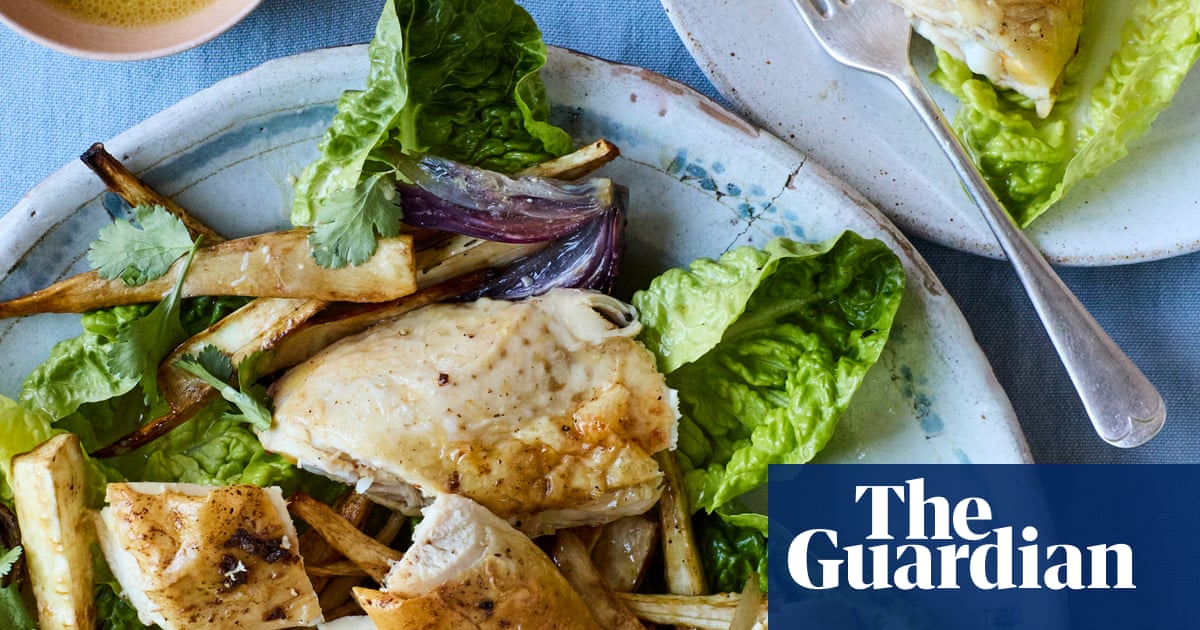
For ice-cream fanatic Felicity Cloake, there is a distinct advantage to making your own ice-cream: you can choose exciting flavours and “eat it all yourself”. While she doesn’t see the point in churning vanilla (“you can buy such nice ones, after all”), now is the time for stirring cherries, blackcurrants and the like through custard. (For fellow ice-cream enthusiast Nigel Slater, that means heating milk and vanilla, plus double cream, if you fancy, pouring into egg yolks whisked with sugar, then heating again until thickened.)
Flavour decided, it’s then mostly a question of equipment. Kitty Travers of La Grotta Ices in London has the scoop (sorry): “A really fantastic ice-cream is 50% ingredients [for flavour] and 50% machinery [for texture].” During her years teaching at the School of Artisan Food, Travers found Cuisinart ice-cream makers to be a popular choice, while Cloake has a reconditioned Gaggia stashed in her shed, not that she always uses it. “I’m often inclined towards no-churn ice-creams to save getting it out, which is a faff,” Cloake says. She’s in good company, too, because Slater doesn’t think a machine is essential, either. He writes: “You can make a perfectly fine ice-cream with a fork and freezer box. The trick is to let the mixture freeze around the edges, so only the centre is still soft, then beat briefly with a whisk or fork, bringing the glistening crystals into the middle, then return it to the freezer.” Repeat every hour or so.
As in life, it’s all about setting expectations. Machines whip as they freeze, adding air (for lightness), while the agitation of the mix creates small ice crystals (for smoothness). “It’s hard to recreate that by hand, unless you’re using an old-fashioned paddle,” Travers explains. I’m assuming George doesn’t have one of those to hand, so he’ll need to look elsewhere. Egg yolks are “fantastic for creating satiny, smooth custards”, Travers says, while Cloake favours condensed milk – its high sugar and low water content help achieve that “almost velvety consistency”.
Don’t get cute with sugar, though. “It’s what gives ice-cream its creamy texture,” Travers says, “so if you take out too much, you’ll end up with an icy texture.” You could, however, go for a mix of ordinary and liquid sugars: Travers suggests golden syrup (“it has a delicious flavour and dense consistency”), while Melissa Clark opts for honey. She writes in The New York Times: “Not only does it improve the texture of the ice-cream, but it also adds its inimitable caramelised sweetness.” High-pectin fruits such as apricots, plums or gooseberries will help with texture and avoid iciness, too, Travers adds.
And don’t forget a splash of booze. Thanks to its low freezing point, you’ll get a more scoopable result, says Cloake, who whisks whisky or rum into condensed milk, vanilla essence and salt, then combines with beaten double cream. And if all else fails, employ your food processor, Travers says: “Mum confounds me by never using a recipe when she makes ice-cream. It freezes very hard and icy, but then she Magimixes it before serving and it always comes up lovely.”
You could, of course, deviate from ice-cream altogether. “If I didn’t have a machine,” Travers says, “I’d make semifreddo.” Go all out with different flavoured layers (think neapolitan), or slice and stick it in a cone. “It’s not exactly ice-cream,” she adds, “but it is rich, smooth and delicious.” Sweet.












